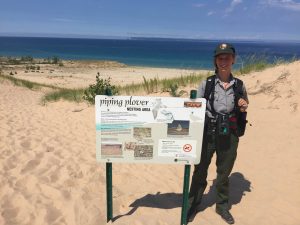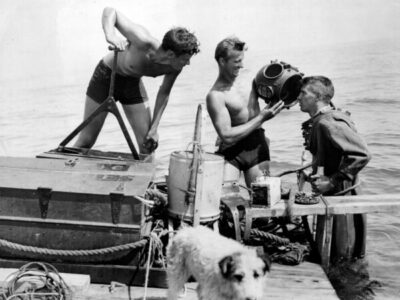
A note from the editor:
Our friends at Great Lakes Today produce compelling, original audio coverage of issues effecting the Great Lakes. This recent piece of theirs about the effect of climate change on migratory birds resonated with us here at the Great Lakes Bureau in particular because, anecdotally, we’ve noticed similar patterns in our work around the lakes. For instance: we’ve been researching a story about the Piping Plover population at Sleeping Bear Dunes National Lakeshore here in Michigan. In late August we visited the Lakeshore and learned about the extensive habitat restoration work that the national park has been doing for over a decade. We were shown nesting areas during our visit where, usually, there would still be Plover families getting ready for their migration south. This year, however, they started their journey unusually early, and all we saw were the remnants of their gravelly nests. Next Spring we will be returning to the Lakeshore to film the arrival of the Plover to their summer habitat, their ridiculously adorable hatchlings, and the the successful growth of the population of this endangered bird, due largely to restoration work. Special thanks to the folks at Sleeping Bear National Lakeshore, and park ranger Emily VanWyk, pictured below, for being our informative guide. Stay tuned for our Piping Plover coverage in the Spring! 

Climate change threatens birds migrating along Great Lakes
Great Lakes Today
Marshall Iliff is with the Cornell Lab of Ornithology in New York and heads up a website called E-bird. There, bird watchers can record information about what species they see, when and where. He says the information shows that migrations are shifting. “Almost across the board we see that birds are arriving earlier.” Warmer climates are prompting birds to make their moves sooner, which can put them out of sync with their habitats and food sources. Researchers are using the data collected on Illiff’s website and others to show how climate change is affecting hundreds of species of birds. Some of the migratory songbirds that pass through the Great Lakes region are already on the move, and volunteers at the Braddock Bay Bird Observatory are preparing for them. Hundreds of species – swallows, finches, warblers and more — visit the observatory on the shore of Lake Ontario, just west of Rochester. Today, the volunteers are repairing large nets, about 12 feet high with very fine mesh. That’s how they catch the birds. “When they’re flying along, they kind of hit these soft nets and fall into little pockets or hammocks,” says education director Andrea Patterson. Volunteers take measurements and estimate the birds’ age, and put on a little numbered band so other sites can identify them.They also record when different types of birds show up. And, Patterson says, they’re noticing some changes. “Magnolia warblers are — the first arrival is on average about two days earlier,” Patterson says. “Lincoln sparrows — the average arrival is about four days earlier. And that might not sound like much, but that’s one day every six years, and that’s going to add up over time.” And, it’s not just those species.”Almost across the board we see that birds are arriving earlier,” says Marshall Iliff of Cornell University’s Department of Ornithology. He heads up the website E-bird, where recreational bird watchers record data about what species they see, when and where. The birds are arriving earlier, because they’re reacting to climate change.”We’re certainly in an interesting period in terms of climate,” Iliff says. “Things are changing quickly, not only warming, but becoming more variable.”Warmer temperatures prompt the little travelers to start their migrations early. And even a couple days difference can disrupt a delicate natural balance and put entire species at risk.Take the Blackpoll warbler for example.Each fall, this tiny bird takes off from its breeding grounds in the Boreal forests of Canada and flies 4,000 to 5,000 miles to South America. The birds weigh little more than a pair of nickels but they can fly hundreds of miles non-stop.They have perfectly evolved to be in sync with their environments. So when the timing shifts, the birds might not have a place to make their home, or enough food to feed their hatchlings. Birds aren’t the only species affected. But scientists are studying them as an early indicator of the threats of climate change. For Patterson, holding a bird like the Blackpoll warbler connects you to not only the animal but to the environment in a really powerful way.“I remember going to Norway and standing on a train platform where my ancestors emigrated from,” she says. “I thought about them getting ready to leave and never return.”But the entire warbler species packs up and heads to a place where most of them have never been to and they hope that there’s something good for them when they arrive but more and more often, there isn’t.”




